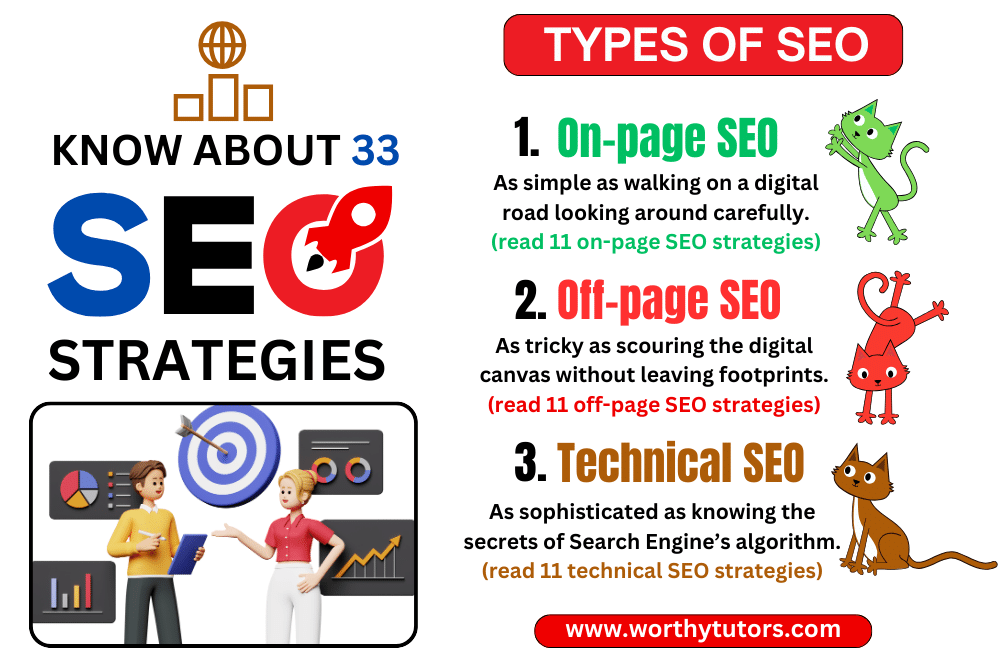
Search Engine Optimization (SEO) is a digital marketing strategy aimed at enhancing a website’s visibility in search engine results. In essence, it involves optimizing various elements on a website to improve its ranking when users search for relevant terms or phrases. The primary goal of SEO is to increase organic (non-paid) traffic to a website by aligning its content and structure with the algorithms used by search engines like Google or Bing. SEO encompasses a range of tactics, from keyword optimization to link-building, all aimed at making a website more accessible and attractive to both users and search engines.
SEO involves an intricate dance between website content, user experience, and the technical aspects that search engines use to crawl and index web pages. It’s not just about incorporating keywords into the content but also ensuring a seamless and enjoyable experience for visitors. Effective SEO strives to strike a balance between meeting the algorithms’ criteria and delivering valuable, relevant content to the audience.
Why SEO is Necessary?
The internet is flooded with websites competing for attention, making visibility a key challenge. In this context, SEO emerges as a critical necessity for businesses and individuals alike. When your website ranks higher in search engine results, it is more likely to attract organic traffic. Studies consistently show that users are more inclined to click on one of the top results, making a strong case for the importance of SEO in driving quality traffic.
Moreover, SEO is an invaluable tool for establishing credibility and trust. Websites that appear on the first page of search results are often perceived as more authoritative and trustworthy by users. As online visibility becomes synonymous with credibility, investing in SEO becomes a strategic imperative for anyone seeking to make a mark in the digital sphere.
Does SEO Help in Conversion Rate?
Absolutely, yes! SEO not only brings in more visitors but also helps in converting them into customers or achieving other desired actions. By optimizing your website for relevant keywords, you attract users who are actively searching for information, products, or services related to your offerings. This targeted traffic is more likely to convert because it is already predisposed to engage with content or make a purchase.
Moreover, a website optimized for user experience and relevance creates a positive impression on visitors. From fast-loading pages to mobile responsiveness, technical aspects of SEO contribute to a seamless and enjoyable browsing experience. When users find what they are looking for effortlessly, they are more likely to stay on the site, explore further, and take the desired actions—whether it’s making a purchase, filling out a form, or subscribing to a newsletter.
What are the Three Basic Types of SEO?
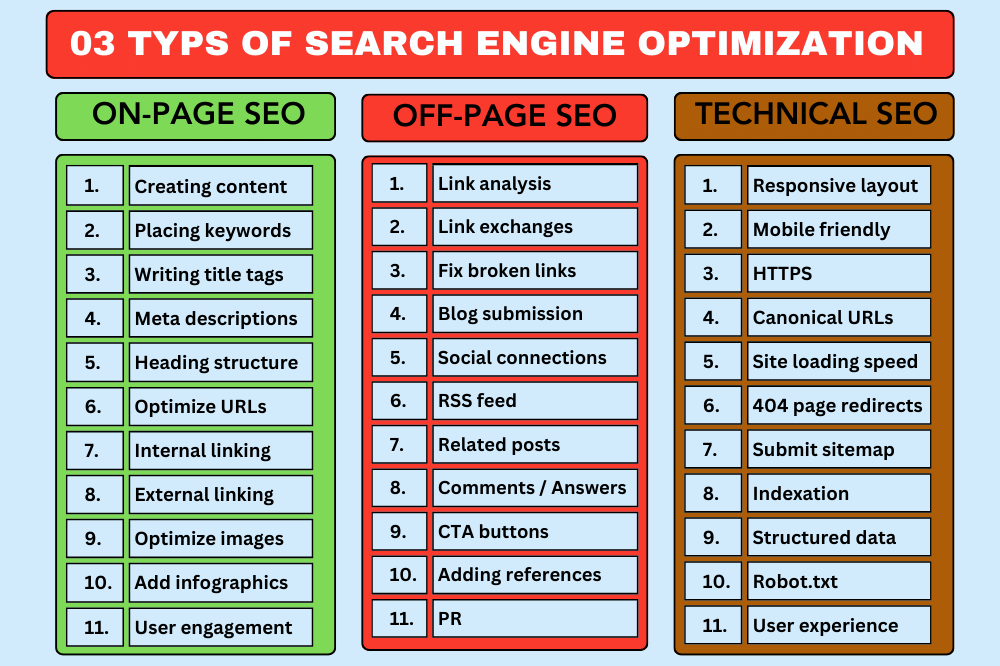
On-Page SEO for Beginners:
On-page SEO focuses on optimizing individual web pages to rank higher and earn more relevant traffic. This includes optimizing content with relevant keywords, ensuring proper HTML tags, and enhancing user experience. Elements like title tags, meta-descriptions, and header tags play a crucial role in on-page SEO. Below are the few on-page SEO strategies for beginners.
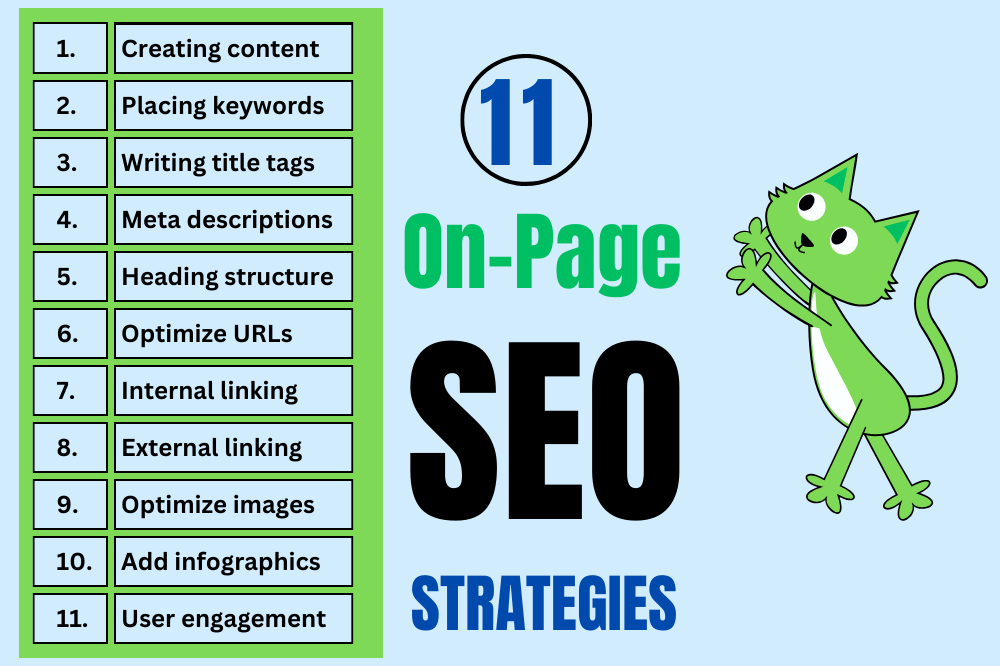
- Do a keyword research before writing a post/blog.
- Make an attractive and catchy title for your post with a keyword in it.
- Create a unique and helpful content that meets users need.
- Create a short url (with your keyword) that reflects your content.
- Create a brief meta description that describes the intent of you article. Place keywords in your meta description and tags.
- Place a featured image with an alt text and a correct name (prefer descriptive names).
- Create a good heading structure of your article.
- Place your keyword or synonyms of keywords in H1, H2, and subheadings.
- Add relevant colorful infographics in your content that reflects information according to your content.
- Add internal linking in your post to other article on your website.
- Make few external links that refer to some authority sources like Wikipedia, surveys, or journals published by authority websites.
- Make your content convenient and easy to read for your visitors.
Off-Page SEO for Beginners:
Off-page SEO involves activities outside the website that impact its visibility. Link-building is a significant component, where acquiring high-quality backlinks from reputable sources can boost a site’s authority. Social media engagement, influencer partnerships, and online mentions also contribute to off-page SEO. Below are few off-page SEO strategies for beginners.
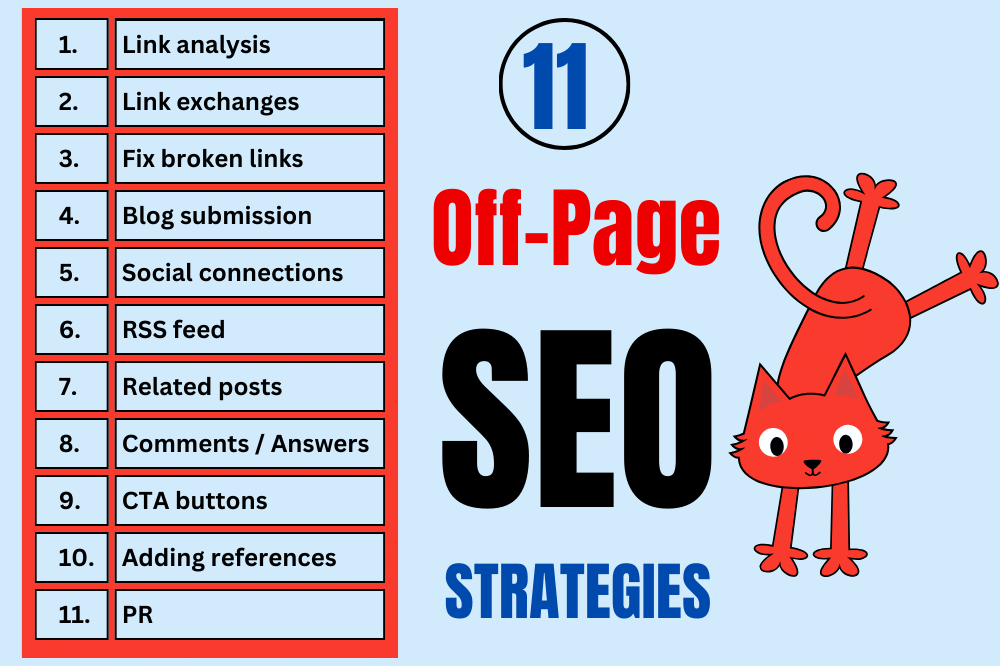
- Off-page SEO focuses primely on link analysis.
- Get backlinks from authority websites for your blog/article.
- Fix broken links inside your article.
- Submits guest posts on other website (like Medium, Quora, Wikipedia) to get a backlink.
- Make social links accessible for visitors to share your content directly.
- Submit your blog in business directories.
- Add related posts at the end of your post.
- Allow users to make comments on your posts and answers all questions asked in comments.
- Make attractive and visible CTA buttons to generate leads.
- Add links on quotations, references, and survey reports.
- Share your content via different social connections.
Technical SEO for Beginners:
Technical SEO deals with the backend elements of a website, ensuring it is accessible to search engines and users. This includes optimizing site speed, improving mobile responsiveness, fixing crawl errors, and creating a logical site structure. Technical SEO ensures that search engines can efficiently crawl, index, and rank the website. Here are few strategies for beginners to do technical SEO.
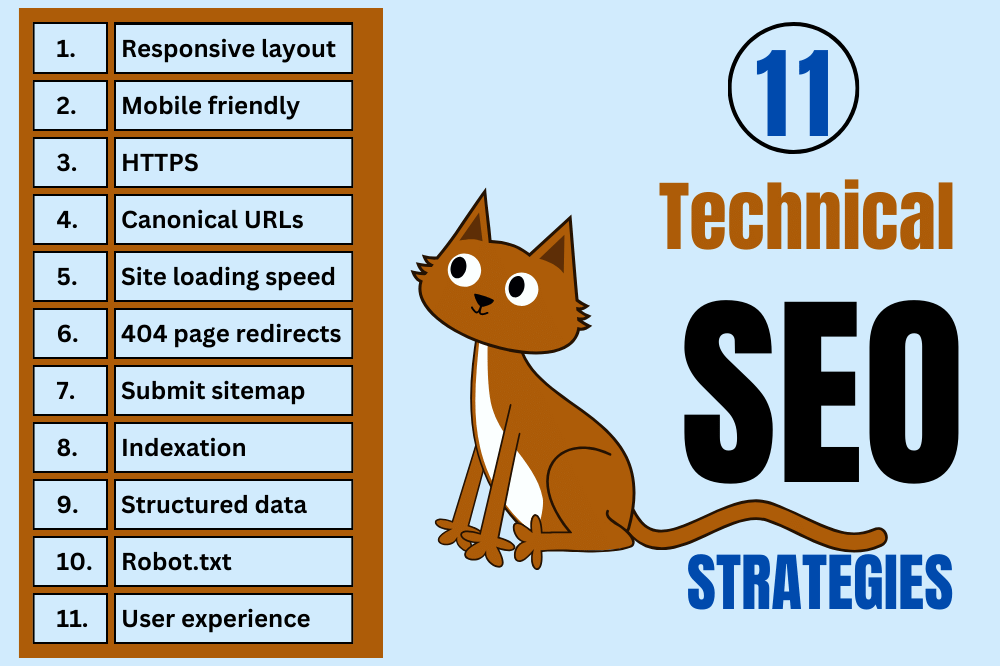
- Making a responsive layout is a core step in technical SEO.
- Make your website mobile friendly.
- Get an SSL certificate for https connections.
- Avoid duplicate urls.
- Focus on page loading speed.
- Make redirects for 404 pages.
- Submit sitemaps to search engine consoles.
- Index your pages manually if not indexed.
- Add robot.txt files in your header.
- Make your site attractive to visitors.
- Avoid adding pop-ups screens because it annoy visitors.
Conclusion
In the ever-evolving digital landscape, mastering the art of SEO is indispensable for anyone seeking a prominent online presence. It’s not merely about climbing search engine rankings but about delivering valuable content to the right audience. From the technical intricacies of website optimization to the strategic use of keywords and off-page tactics, SEO is a holistic approach that aligns digital content with user intent. Embracing the principles of SEO is not just a best practice; it’s a powerful strategy for staying relevant and competitive in the vast and dynamic realm of the internet.
Learn Content Writing, Blogging, & SEO
Introduction to Blogging
How to Start Blogging
Scope of Content Writing
Different Forms of Content Writing
Types of SEO
Keyword Research Strategies
Blogging & Content Writing Terms
How to Make Title of a Blog Post?
How to Improve Readability Score?
Heading Structure of a Blog Post